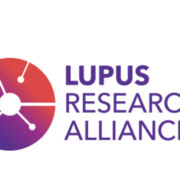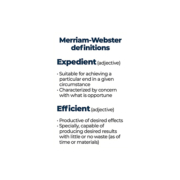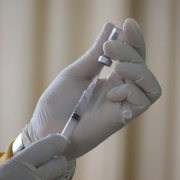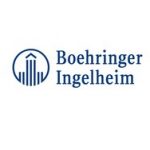Paving the way for innovation and acceleration: 2024’s regulatory shifts
Paving the way for innovation and acceleration: 2024’s regulatory shifts
Paving the way for innovation and acceleration: 2024’s regulatory shifts
By Keith McDonald, IQVIA
In an era marked by rapid advancements and critical breakthroughs, the life sciences industry stands on the cusp of transformative regulatory changes in 2024, each promising to redefine pathways to life-saving therapies. As organizations focus on finding the most efficient pathways to market and provide patients with rapid access to novel treatments, they face a variety of regulatory hurdles. These challenges are influenced not only by regional regulatory developments but also by a company’s global footprint, the size and capabilities of regulatory teams, resource limitations and the target markets for commercialization.
While these factors influence how organizations navigate the pharmaceutical regulatory maze, 2024 continues to bring a variety of regulatory developments that can provide opportunities for drug developers and those who are required to maintain compliance. Evolving regulations affect organizations globally as distinct regions and markets have differing standards, and it is critical that companies comply with all applicable regulations. Complying with these evolving regulations not only ensures legal adherence but also accelerates the delivery of innovative treatments to patients worldwide.
Navigating 2024’s developments
This year brings a variety of regulatory developments that are poised to shift the pharmaceutical landscape. These developments include:
- United Kingdom (UK) International Recognition Procedure (IRP) – This new IRP significantly impacts how companies strategize their filings for the UK and could be a measurement for reliance procedures in other smaller markets. A comprehensive understanding of the nuances of IRP is crucial for efficient UK market access.
- S. Food and Drug Administration (FDA) / European Medicines Agency (EMA) / Japan Collaboration for Gene Therapies– The prospect of greater international harmonization of regulatory expectations in the development of gene therapy products could bring improved clarity in this complex environment where many products aim to cure conditions that were previously untreatable.
- Closer international cooperation among regulatory authorities such as the FDA Project Orbis (oncology focused) and the Access Consortium – These efforts provide opportunities for parallel, streamlined and improved time to access of products, particularly in countries that typically experience a submission gap from the time the products are filed to the time they are approved in priority markets. EMA participation in Project Orbis as an observer may also signal an intent to improve the time to approval for oncology products.
- European Union (EU) Clinical Trial Regulation – Sponsors can submit one online application rather than multiple national applications for approval. The transition period for clinical trials approved under the previous regime will end by January 2025, and sponsors must transition ongoing studies to the new regulation prior to this date.
- Innovative Licensing & Access Pathway (ILAP) relaunch in the UK – The industry showed a large appetite for engagement with the ILAP scheme on its launch in 2021. However, clarity on the benefits of the Innovation Passport and Target Development Profile remains to be realized. Will a relaunched scheme in 2024 provide for the anticipated benefit in time to market?
- FDA Project Frontrunner – The project works to develop a framework to support trials intended for initial approvals of treatments in earlier clinical settings of metastatic disease. Frontrunner offers closer engagement with FDA Oncology Center of Excellence to support development of promising candidates that can demonstrate efficacy earlier in the progression of disease.
- Rare disease: Support for clinical Trials Advancing Rare disease Therapeutics (START) – This signals acommitment to providing more access to FDA resources for drug developers of biologic and drug molecules in rare diseases. Currently, START is in the pilot stage. However, it demonstrates the potential for providing more support and clarity for conditions that pose development challenges due to their nature and low prevalence. The UK initiative, which includes the Medicines and Healthcare products Regulatory Agency, Genomics England, Oxford University and Mila’s Miracle Foundation, works to develop a proportionate regulatory pathway for access for potentially life-saving treatments in ultra-rare conditions.
- EU Pharmaceutical Package – As this new directive and regulation continues to be negotiated among EU institutions, developers will need to keep an eye on anticipated changes to incentives, opportunities and requirements of the future in the EU.
The above developments must be taken into consideration during drug development, as noncompliance or missed opportunities among the available regulatory incentives can result in costly delays of potentially life-saving therapies. However, the added complexity of updated and new requirements proves to be a challenge.
While not yet a reality, the industry is making strides towards the global harmonization of standards. For example, initiatives such as Project Orbis and the Access Consortium provide options for more aligned decision making among regulators. The new EU Health Technology Assessment (HTA) legislation also provides an opportunity for closer regulatory and HTA body interactions, working towards alignment on data requirements and interpretations.
In particular, there is increased collaboration between regulatory bodies and the life sciences industry for products that fulfill unmet needs. Moving forward, these efforts will be ongoing to streamline processes as well as harmonize standards, ushering in the continued evolvement of global standards.
In addition to navigating the traditional regulatory landscape, sponsors must also meet the needs of reimbursement bodies, such as HTA bodies in the EU and Canada. Staying up to date with evolving regulations and alignment efforts is critical for sponsors to ensure the safety and wellbeing of patients receiving new therapies. Additionally, a thorough understanding of the regulatory landscape enables the development of more streamlined, efficient studies across countries. Ultimately, this allows faster market access for transformational products and treatments.
Preparing for the changes
The regulatory landscape of 2024 presents both challenges and opportunities for the pharmaceutical industry. To navigate this ever-changing landscape, proactivity is particularly key as regulatory strategy directly impacts time to approval and post-approval compliance activities. Organizations should consider potential regulatory hurdles and implement risk management strategies to ensure assets are optimized for success.
Expert insights and thorough regulatory intelligence are essential in developing streamlined and efficient studies across countries, allowing for faster market access for transformational products and treatments. As the industry moves toward global harmonization of standards, continued collaboration between regulatory bodies and the life sciences industry will be key in addressing unmet needs and promoting innovation.
By preparing for regulatory updates and implementing robust risk management strategies, organizations can optimize their assets for success and ensure the safety and wellbeing of patients receiving new therapies. Embracing these regulatory shifts not only paves the way for innovation and acceleration but also ensures that life-saving treatments reach patients more quickly and efficiently.
 |
Keith McDonald is head of drug development strategy, regulatory affairs and drug development solutions (RADDS) at IQVIA. |











